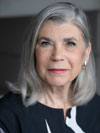Under
the steely eye of Good Queen Bess, a crowd of property industry clients and
consultants gather to hear about the launch of the DTZ Curzon Group at the National
Portrait Gallery in London. An appropriate setting for an initiative to attract
and retain more women in the sector, yet I can't help wondering how Elizabeth 1
- the monarch with the 'weak and feeble body of a woman but the heart and stomach of a king' -
would have regarded the need for such an event half a millennium after she had
ruled a country for so long.
But
then as Colin Wilson, head of DTZ in the UK and Ireland says in his address, for organisations like his who can trace
their origins back a few hundred years, "it is difficult to judge the
point at which things like this need to change - largely because that is the way it has
always been." So the DTZ initiative is welcome, particularly as the plan is to roll
it out throughout the EMEA region.
Interestingly, as 2013 draws to a close, the DTZ event is one of a veritable flurry looking at attracting and keeping more women in engineering, construction and property. Listening to the familiar litany of problems, proposals for more research, earnest statements about fishing in only half the pool, I raise my metaphorical hat yet again to the campaigners who repeat their storytelling with new minted, smiling freshness. But it seems that the demographic and economic arguments have finally got through, not to mention that whilst the UK slides down the global table when it comes to the number of young people studying science and engineering, the relatively few girls tackling these subjects achieve higher grades than the boys.
Interestingly, as 2013 draws to a close, the DTZ event is one of a veritable flurry looking at attracting and keeping more women in engineering, construction and property. Listening to the familiar litany of problems, proposals for more research, earnest statements about fishing in only half the pool, I raise my metaphorical hat yet again to the campaigners who repeat their storytelling with new minted, smiling freshness. But it seems that the demographic and economic arguments have finally got through, not to mention that whilst the UK slides down the global table when it comes to the number of young people studying science and engineering, the relatively few girls tackling these subjects achieve higher grades than the boys.
 |
| Student Award finalists 2013, run by the Association of Women in Property |
However there is an interesting dichotomy appearing. We might have moved from a culture of avoiding putting gender on the agenda to a cry of 'please tell us how to resolve it' but there is still quite a degree of wriggling when it comes to terminology. Colin Wilson confesses to being uncomfortable with words like gender or ethnicity, preferring to talk about people.
The language issue arises again the following week when the redoubtable Dorte Rich Jorgensen hosts a CIC Constructive Diversity event at the Building Centre. We hear Kate Lloyd of the CITB telling us how difficult it is to attract women (generating heated interventions about the loss of successful training organisations such as Women's Education in Building) and how one of the problems is that diversity is a word that turns off construction industry employers, particularly SMEs.
We then hear veteran change manager Ian Dodds telling us about his time at ICI back in the 1970s and his more recent work with legal firms. Quoting a US report from 2007 that reported growing concern about white men beginning to feel vulnerable and alienated, he suggests that the word inclusion rather than diversity generates a more positive reaction.
Perish the thought that we are using language that makes men feel uncomfortable, I muse, recalling trying to convince report and contract writers that it is not enough to assure everyone that when referring to 'he' and 'him' they mean women too. Not to mention a sales director telling me a few years ago that his ideal candidate for a customer relations manager is a blonde with large bosoms (well not exactly those words).
And this year - for those who think times have changed - we saw astonishing personal attacks against Australia's first woman prime minister. For example, a dish at a Liberal party fundraising dinner was called Julia Gillard Kentucky Fried Quail, was described on the menu as 'small breasts, huge thighs and a big red box.'
 |
| Cartoon found on deliberatelybarren.blogspot.com |
Back at the National Portrait Gallery, beneath the portrait of the Virgin Queen, I am reminded that Julia Gillard was not only attacked for her personal appearance but also for being 'deliberately barren' to pursue her career. I step up to the platform, on behalf of the Association of Women in Property, to congratulate Colin Wilson on establishing the Curzon Group and tell the assembled crowd that I prefer to talk about 'Age, sex and leadership', rather than diversity or inclusion - and that people usually stay to listen rather than making a quick exit for coffee.
If we are going to increase the recruitment and retention of women
in construction, property and engineering we need to take an up-front,
rather than simply a politically correct approach. Calling a spade a spade may cause some discomfort, but calling a spade a shovel might get the job done quicker.
 |
| Peasant man and woman digging, Vincent Van Gogh |













